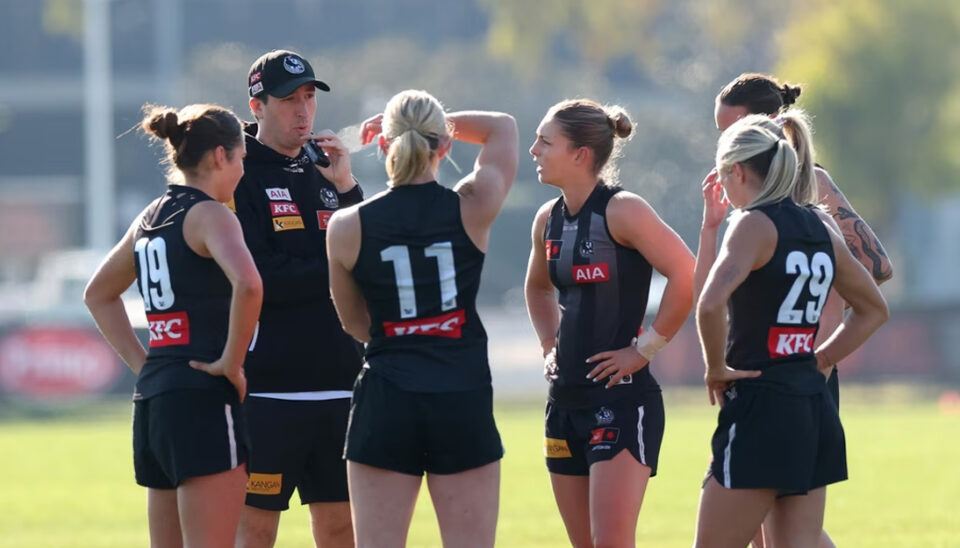AFLW club officials are grappling with the limitations imposed by their soft cap allocation in the wake of an increase to the men’s soft cap announced by the AFL last week.
The AFL men’s soft cap is slated to increase by $750,000 next year, and a further $350,000 the following year, taking the cap to over $9 million by 2027, and edging closer to its pre-COVID position. This is an addition of $600,000 to the original soft cap growth outlined in September 2024.
This significantly shades the AFLW’s cap of $1.375 million by 2027, with increases of $100,000 in each of the next two years to reach that figure.
There is particular concern around the expectation placed on assistant coaches, whose average salary across the League hovers around $20,000. In the past, assistant coaches could make do with evening training sessions, arriving after a typical workday at another job, but with a recent shift to daytime training due to the players’ increased pay, it has caused some problems for assistant coaches balancing two vocations.

Melbourne players at AFLW training on May 28, 2025. Picture: AFL Photos
The average salary for development coaches within AFL programs in 2024 was $125,000 per year, and $180,000 for assistant coaches.
Clubs also must spend a minimum of 90 per cent of their men’s soft cap, while there is no minimum spend in women’s.
Previously confirmed increases to the AFLW soft cap were, according to clubs, immediately eaten up by lengthening seasons, with 11 rounds and four weeks of finals last year, and 12 rounds and a month of finals fixtured for this year.
There was no mention of additional increases in the AFLW soft cap in last week’s announcement, but an AFL spokesperson told womens.afl this week: “The AFLW soft cap is due to increase by five per cent per annum in 2026 and 2027, which equates to $100,000 per year. Future adjustments for the AFLW soft cap will be assessed in the context of the AFLW Growth Strategy which is currently in development.”

A mechanism exists within the soft cap, whereby unused funds from the men’s cap can be siphoned to women’s programs, but the choice to do so is up to clubs, so there is some onus on club officials to consider how to best accommodate resources for their AFLW programs.
There is demand across the AFLW for larger list sizes – currently sitting at 30 players, with 21 selected each week – and greater support for players now that they are on year-round contracts and increased contact hours. But there is a hold-up given the limited resources that clubs are able to offer with the limited funds.
The AFLW playing group experienced a significant pay increase with the 2023 collective bargaining agreement (CBA), with player salaries to rise 77 per cent by 2027 compared to their 2022 levels.
AFLW players’ official contact time covers the 12-week preseason the season proper, with the period between December and April deemed their off-season. With increasing professionalism, and year-round commitments, however, players are seeking to use club facilities in their off-season without clubs necessarily having the resources to adequately accommodate the players’ growing investment.
Some AFLW programs have also been affected by staff opting to move into full-time, better-remunerated roles within the men’s program, rather than signing less secure six-month contracts with the women’s program.

